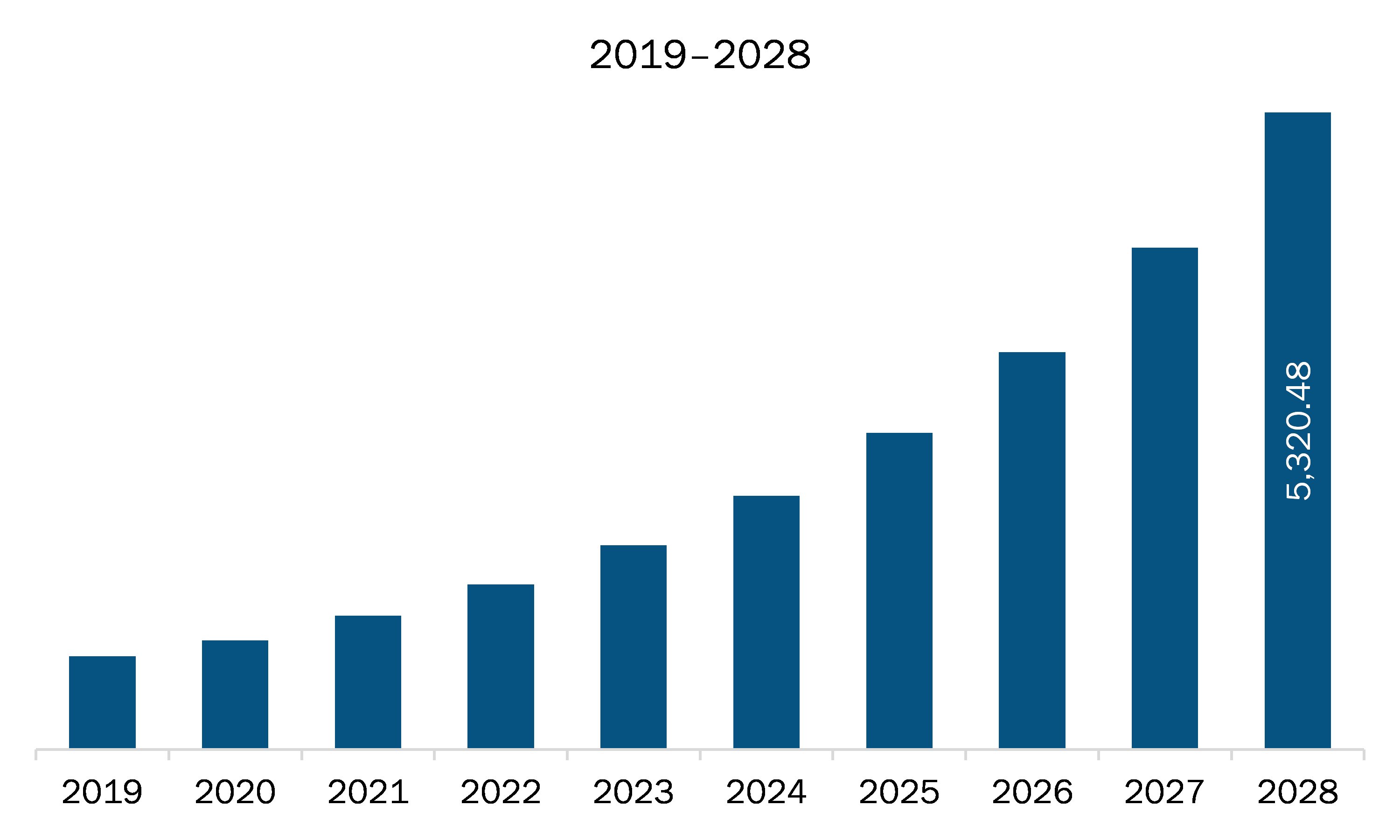The real-time location systems market in Europe is expected to grow from US$ 1,116.64 million in 2021 to US$ 5,320.48 million by 2028; it is estimated to grow at a CAGR of 25.0% from 2021 to 2028.
Germany, UK, France, Italy, and Russia are economies Europe. Online shopping is increasing at the fastest pace across the region. Ecommerce sales have been growing at a significant rate over the last decade and are anticipated to grow in the coming years. Besides this, Europe is also a key region supporting e-commerce growth. The e-commerce industry in Europe was worth US$ 425.2 billion in 2020 and is expected to grow by 30% in 2021 according to Finaria. Amazon and other e-retailers have taken over conventional retail. Many shoppers in Europe prefer online shopping platforms, such as Amazon, Target, and Wal-Mart, which is the major reason for the growth of the e-commerce sector in Europe. Increasing demand for making retail cost-efficient and generally faster means that companies need to optimize supply chain management and build robust solutions to meet the demands. A survey conducted in the UK of 250 distribution, warehouse, and supply chain managers revealed that ~3,000 hours of are lost due to unproductive workflows at distribution centers. The real-time location system proves to be a highly efficient instrument that is used for monitoring and locating goods, as it provides resourceful insights to the distribution center operators to make data-driven decisions rather than relying on educated guesses. Thus, the growing ecommerce industry coupled with the increasing need for making data-driven decisions drives the real-time location system market growth.
Several European countries have experienced significant rise in spread of the COVID-19 virus. For instance, Russia, the UK, Italy, Spain, Germany, and France, among others are the countries with highest number of cases. The stupendous growth in the spread of the virus led the governments to undertake stringent measures to contain the virus during the first wave. The countries mentioned earlier houses numerous manufacturing facilities, which are considered to be one of the power houses of real-time location system market. In addition, the closure of supermarkets in the countries mentioned above during the initial and peak times of virus spread has resulted in substantial decrease in demand for real-time location system among the retailers. The majority of the businesses in the region focused on continuity of their business utilizing the existing resources (both human and technologies) rather than investing on newer technologies. However, the adoption of real-time location system gained traction from the first quarter of 2021.
With the new features and technologies, vendors can attract new customers and expand their footprints in emerging markets. This factor is likely to drive the real-time location systemsmarket. The Europe real-time location systems market is expected to grow at a good CAGR during the forecast period.

- This FREE sample will include data analysis, ranging from market trends to estimates and forecasts.
Europe Real-Time Location Systems Market Segmentation
Europe Real-Time Location Systems Market – By Offering
- Hardware
- Tags/Badges
- Readers/Trackers/Access Points
- Others
- Software
- Services
Europe Real-Time Location Systems Market – By Technology
- Radio Frequency Identification (RFID)
- Ultra-wideband (UWB)
- Bluetooth Low Energy (BLE)
- Ultrasound
- Infrared (IR)
- GPS
- Others
Europe Real-Time Location Systems Market – By Industry Vertical
- Heavy Industries
- Manufacturing
- Retail
- Oil and Gas
- Automotive
- Construction
- Government and Defense
- Education
- Others
Europe Real-Time Location Systems Market – By Application
- Personnel/Staff Locating and Monitoring
- Access Control and Security
- Environmental Monitoring
- Warehouse Management and Monitoring
- Supply Chain Management and Operational Automation/Visibility
- Others
Europe Real-Time Location Systems Market- By Country
- Germany
- UK
- France
- Italy
- Russia
- Rest of Europe
Europe Real-Time Location Systems Market-Companies Mentioned
- AiRISTA Flow Inc.
- Aruba Networks
- Decawave Limited
- Impinj, Inc.
- Siemens AG
- Sonitor Technologies AS
- Stanley Black & Decker, Inc.
- TeleTracking Technologies Inc
- Ubisense
- Zebra Technologies Corporation
Europe Real-Time Location Systems Report Scope
| Report Attribute | Details |
|---|---|
| Market size in 2021 | US$ 1,116.64 Million |
| Market Size by 2028 | US$ 5,320.48 Million |
| CAGR (2021 - 2028) | 25.0% |
| Historical Data | 2019-2020 |
| Forecast period | 2022-2028 |
| Segments Covered |
By Offering
|
| Regions and Countries Covered |
Europe
|
| Market leaders and key company profiles |
|
- Historical Analysis (2 Years), Base Year, Forecast (7 Years) with CAGR
- PEST and SWOT Analysis
- Market Size Value / Volume - Regional, Country
- Industry and Competitive Landscape
- Excel Dataset
Recent Reports
Testimonials
Reason to Buy
- Informed Decision-Making
- Understanding Market Dynamics
- Competitive Analysis
- Identifying Emerging Markets
- Customer Insights
- Market Forecasts
- Risk Mitigation
- Boosting Operational Efficiency
- Strategic Planning
- Investment Justification
- Tracking Industry Innovations
- Aligning with Regulatory Trends





















 Get Free Sample For
Get Free Sample For